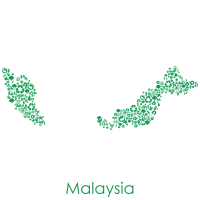5. Public Private Partnership
Public Private Partnership was introduced 1in Malaysia since the 1980s and found its first structural organization between 1985 (the year when the Privatization Guidelines were published) and 1991 (the year when the Privatization Master Plan was published).
Subsequently, the 9th Malaysia Plan (2006-2010) enhanced the Public Private Partnership with a new financing scheme, to be used as an alternative method of financing the development and maintenance of public infrastructure and facilities; at the same time, the Privatisation and Private Finance Initiative Unit, later renamed the Public Private Partnership Unit (UKAS), was established.
The 11th MP and 12th MP attach increasing importance to public-private partnership and in 2022 the concept “3.0” was formulated, which was then articulated in the programmatic document “Guidelines on the executive framework for public-private partnership 3.0” 2.
The PPP 3.0 framework will be implemented through four strategies 3:
-
Strengthen PPP Policy . PPP Policy 3.0 focuses on the implementation of PPP projects that meet the objective of accessibility, equity, replicability and stakeholder involvement; PPP Policy 3.0 is strengthened through eight (8) elements which are:
-
emphasis on “People at the Centre”, where the people element is not considered as “final consumer”, but can be involved as owner or financier within an appropriate PPP project;
-
Any new PPP project proposal shall be able to meet the requirements of the relevant Government Ministry/Agency, which will be considered as part of the country's development in line with the Malaysia Five Year Plan.
-
emphasis on selecting a concessionaire company through a Request for Proposal (“RFP”) bidding process;
-
emphasis on a facilitative approach , providing services that can expedite approval processes, including the provision of government assistance through a Facilitation Fund;
-
focus on PPP projects that can be implemented in a short period, to accelerate the country's economic growth;
-
explore new sectors and areas that have potential and rapid spill-over effects, such as tourism;
-
promote environmental, social and governance (“ESG”) concepts in the implementation of the PPP project;
-
explore new geographical areas of economic growth that will have investment potential other than the established Klang Valley;
-
-
strengthening institutions and empowering UKAS . Several steps are being taken, such as a “one stop shop platform”, for coordination purposes at national level to ensure that PPP projects are considered national development projects to optimise service delivery and the financial capacity of the government;
-
enhance existing financing and explore new financing elements . Financing, especially project financing, is an important element in the implementation of development projects, including PPP projects. The financing conditions imposed by the financiers on the concessionaires determine the charges that will be imposed on the consumers or end-users. It is crucial that the financiers provide reasonable financing, taking into account the charges imposed on the consumer. In addition, in the short term, the government will establish a facilitation fund for new high-impact infrastructure projects. Financial assistance could reduce the cost of a particular PPP project and result in a reduction in the charges imposed on the consumer or end-user. In addition, the government is keen to explore various new financial instruments such as crowdfunding , mini bonds, Waqfs (Muslim Pious Trusts) and other related instruments for smaller community-level projects.
-
implement various approaches for PPP execution . The implementation of existing PPP projects involves a privatization model combined with private financing initiatives. For short-term periods, a utility-payment based execution model will be given priority as it will be able to strike a balance between the elements of financial sustainability for the private sector and the concept of affordability for the end-user. Such a model optimizes the value of the asset by monetizing it.
the UKAS “Master Plan for Public Private Partnership 2023 - 2032” and the new “Strategic Plan 2023-2027” were published . 4The “Master Plan for Public Private Partnership 2023 - 2032” (PIPPP) is designed to improve on the 1991 Privatisation Plan and introduce a new PPP model, a viable financing structure and its application to potential new sectors over a 10-year period from 2023 to 2032. The “Strategic Plan 2023-2027” sets out UKAS’s strategic direction in implementing the PPP initiative over a five-year period , sets out a commitment to time-bound project appraisal and approval processes (3 months for appraisal, 12 months for negotiation of terms, 2 weeks for Cabinet comments/directions, 2 days for receipt of complaints), and defines three areas of strategic intervention:
-
stabilize the PPP framework, with detailed policies, project planning systems, the creation of a national and international network and the development of a communication plan
-
strengthen the provision of services for PPP, through the improvement of evaluation and negotiation procedures, the development of project coordination and information dissemination mechanisms and the streamlining of the Secretariat of the Unit
-
strengthen PPP governance and impact, through capacity building, development of skills and professionalism, improvement of financial and organizational services and promotion of integrity.
1https://www.commonwealthgovernance.org/countries/asia/malaysia/public-private-partnerships/
2https://www.ukas.gov.my/en/component/edocman/garis-panduan/panduan-pelaksanaan-rangka-kerja-kerjasama-awam-swasta-3-0-ppp-3-0?Itemid=
3https://www.lexology.com/library/detail.aspx?g=f10e4445-eedd-4699-b201-02f10cd81470
4https://www.ukas.gov.my/en/component/edocman/pelan-strategik-ukas-2023-2027/viewdocument/888?Itemid=
